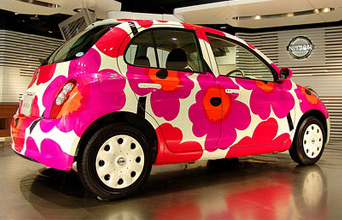3 Questions To Soften The Spring-Fed Impulse To Acquire Inventory
Every spring, dealers get flush with confidence and excitement as sales and profitability pick up in their used vehicle departments.
 This year is no different and it seems dealers are especially buoyant. Here’s a quick sampling of comments from recent e-mails and phone calls:
This year is no different and it seems dealers are especially buoyant. Here’s a quick sampling of comments from recent e-mails and phone calls:
“I think we’ve cracked the nut, Dale. We’ve finally figured out how to make the Velocity philosophy work!”
“My metrics are spot-on and we’re on track for a record-setting March. Bring it on!”
“I’ve sent my buyers out to get more cars. You can’t sell ‘em if you don’t have ‘em.”
But something bothered me amid all the spring-fed enthusiasm—call it a sense of déjà vu.
It didn’t take much digging to connect the dots: Many of the bullish comments were coming from the same dealers who, last fall, were struggling with aged cars, diminished profits and slow inventory turns in their used vehicle departments. A little further research showed that many of these dealers had gone on a spring fever-fed buying spree in April and May—increasing their inventories and adding cars that proved problematic in late summer and early fall.
On one hand, this rollercoaster dynamic is completely understandable. Dealers are blessed with DNA that blends optimism and risk-taking in roughly equal parts. These qualities, when enhanced by a month or two of strong sales, translate to a “we can do no wrong” mentality that spurs decisions to acquire more cars and extend their sales streaks.
On the other hand, there are plenty of dealers who don’t see such dramatic swings in their used vehicle performance. They roll through the spate of increased sales in the spring and resist the temptation to stock up on more vehicles.
I’ve realized that the difference between these two groups of dealers boils down to discipline. The second group of dealers applies a more even-keeled and steady hand as they navigate the seasonal, up and down shifts in the market. They don’t ignore market opportunities that present themselves, but they take a more reflective approach as their retailing impulses and instincts suggest they should increase their used vehicle inventories.
Here are three key questions these dealers ask before they send their appraisers and buyers out with a “we need more inventory” directive:
1. How well do we meet our target metrics? In today’s market, it’s nearly impossible for dealers to always align their market days supply, cost to market, price to market and time in inventory benchmarks to their dealership targets. Stuff happens—whether it’s a sudden shift in the market or a breakdown in the people and processes entrusted to manage used vehicle operations. But even with such risk and volatility, some dealers recognize that unless they consistently meet their target metrics, they really have no business adding more cars to their inventory. They believe it’s better to focus first on fixing reasons behind the deviations from their target goals to achieve consistent performance before they raise the bar.
2. Does our inventory turn rate justify acquiring more cars? When dealers consistently hit their target metrics, they typically achieve better-than-average inventory turn rates. It wasn’t that long ago that a six-times-per-year inventory turn was considered a best practice. In today’s market, however, I believe an inventory turn rate of 12 to 13 times a year is the new performance benchmark. Dealers who have not consistently met this standard should not be increasing their inventory levels. Why? Because they likely have people and process issues that haven’t proven capable of handling the pressure additional inventory will bring. By contrast, dealers who consistently achieve this new inventory turn rate benchmark have demonstrated the necessary metrics-minded discipline and operational capability to accommodate increased inventory—should they choose to do so.
3. Are you up for the challenge? This question really helps dealers mitigate the competing needs of desire and discipline as they consider increasing the size of their used vehicle inventories. In my latest book, Velocity Overdrive: The Road to Reinvention, I note how some dealers have found the “sweet spot” for their stores and local markets. These dealers could add more inventory but they don’t—largely because they’ve determined the additional cars would disrupt the delicate and disciplined balance they’ve achieved that optimizes their goals for inventory turn rates and profitability.
Taken together, these three questions should help remind dealers that the spring-fed impulse to acquire inventory should be met with an equal degree of operational introspection.
The post 3 Questions To Soften The Spring-Fed Impulse To Acquire Inventory appeared first on Dale Pollak.








